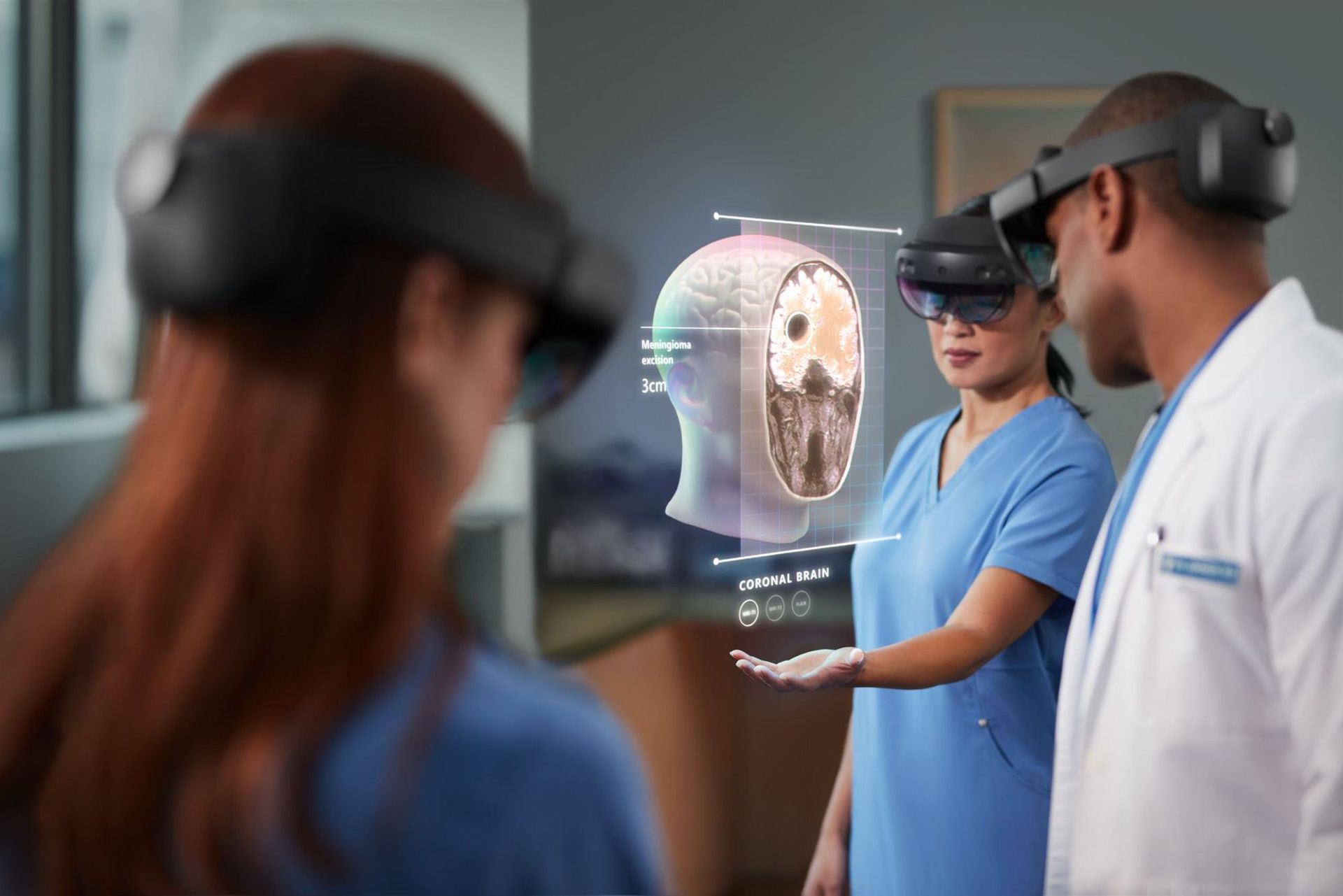The Benefits of Extended Reality (XR) in Surgical Science
Extended Reality (XR) is revolutionizing the field of surgical science, offering unprecedented opportunities to enhance patient safety, improve surgical training, and elevate the overall quality of medical care. As a fusion of Virtual Reality (VR), Augmented Reality (AR), and Mixed Reality (MR), XR provides a dynamic and interactive platform that transforms the way surgeons learn, practice, and perform complex procedures. This article delves into the numerous benefits of applying extended reality solutions in surgical science, highlighting its potential to create safer, more effective, innovative medical practices.
Enhancing Patient Safety
One of the primary benefits of extended reality in surgical science is its significant contribution to enhancing patient safety. Surgeons can use XR technology to visualize and plan surgeries with higher precision before performing the actual procedure. This preoperative planning involves creating detailed 3D models of the patient's anatomy, allowing surgeons to explore different surgical approaches and anticipate potential challenges. By practicing on these virtual models, surgeons can refine their techniques, reduce the risk of errors, and improve patient outcomes.
Virtual Reality in Surgical Training
Virtual Reality (VR) is becoming an indispensable tool in surgical training. Traditional methods of learning surgical techniques often involve observing experienced surgeons and practicing on cadavers, which can be limited in scope and availability. Conversely, VR offers a safe and controlled environment where trainees can repeatedly practice procedures until they achieve proficiency. This immersive learning experience allows aspiring surgeons to develop their skills without the risk of harming real patients.
Realistic simulations can mimic various surgical scenarios in VR-based surgical training, from routine procedures to rare and complex surgeries. Trainees can receive immediate feedback on their performance, identify areas for improvement, and gain confidence before transitioning to real-life operations. This method of training not only accelerates the learning curve and ensures that surgeons are better prepared to handle real-world challenges.
Augmented Reality in Surgical Procedures
Augmented Reality (AR) integrates digital information with the physical world, providing surgeons real-time data and visualizations during surgical procedures. By overlaying 3D images and critical information onto the surgeon's field of view, AR enhances spatial awareness and allows for more precise interventions. For instance, AR can highlight vital structures, such as blood vessels and nerves, reducing the likelihood of accidental damage.
AR technology also facilitates minimally invasive surgeries by enabling surgeons to navigate complex anatomical regions more accurately. This leads to smaller incisions, less trauma to the patient, and faster recovery times. As a result, AR is becoming increasingly popular in various surgical specialties, including neurosurgery, orthopedic surgery, and cardiovascular surgery.

Improved Surgical Outcomes with XR Technology
The potential benefits of applying extended reality solutions extend beyond training and procedural guidance. XR technology can significantly improve surgical outcomes by providing surgeons with enhanced visualization and decision-making tools. For example, XR can offer a comprehensive view of the operative site during surgery, combining real-time imaging with preoperative data to guide the surgeon's movements.
In addition to improving precision, XR technology can also assist in managing complex procedures. Surgeons can collaborate remotely with experts worldwide, sharing live feeds and receiving instant feedback. This collaborative approach ensures that patients receive the best possible care, regardless of location.
Learning Experience with Extended Reality
The learning experience with extended reality is transformative, offering medical professionals an immersive and interactive way to acquire knowledge and skills. Unlike traditional textbooks and lectures, XR provides a hands-on learning environment where concepts can be visualized and practiced. This experiential learning is particularly beneficial in surgical education, where practical experience is crucial.
For instance, XR simulations can replicate rare surgical cases that surgeons may not encounter frequently. Surgeons can familiarize themselves with uncommon conditions by engaging in these simulations and developing the expertise to handle such cases effectively. This continuous learning and skill enhancement contribute to the overall advancement of surgical science.
Solutions to Surgical Challenges
Extended reality offers innovative solutions to some of the most pressing challenges in surgical science. One such challenge is the variability in surgical outcomes due to individual surgeon experience and technique differences. XR can standardize surgical procedures by providing a consistent and reproducible platform for training and practice.
Moreover, XR technology can address the issue of limited access to specialized training and resources. In many parts of the world, aspiring surgeons lack access to advanced surgical training programs. XR can bridge this gap by offering remote training opportunities, allowing surgeons in underserved areas to benefit from the latest advancements in surgical education.
Integration of 3D Models in Surgery
Integrating 3D models in surgery is one of the most exciting applications of extended reality. These models, created from patient-specific imaging data, provide a detailed and accurate representation of the anatomy. Surgeons can interact with these models in a virtual environment, planning and rehearsing the surgery down to the smallest detail.
3D models are particularly valuable in complex procedures where a high degree of precision is required. For example, in reconstructive surgery, surgeons can use 3D models to plan the placement of grafts and implants, ensuring optimal alignment and functionality. This level of preoperative planning enhances the surgeon's confidence and reduces the likelihood of complications.
Future of Extended Reality in Surgical Science
The future of extended reality in surgical science is promising, with continuous technological advancements and increasing adoption in clinical practice. As XR technology becomes more sophisticated and accessible, its applications in surgical science are expected to expand further. The potential benefits of applying XR solutions are vast, from improving surgical training and patient safety to enhancing surgical outcomes and addressing global healthcare disparities.
In the coming years, we can anticipate a more seamless integration of XR in surgical workflows, with real-time data analytics and artificial intelligence augmenting the capabilities of surgeons. This convergence of technologies will lead to more precise, efficient, and personalized surgical care, ultimately benefiting patients worldwide.
Conclusion
Extended reality is a game-changer in surgical science, offering many benefits that enhance patient safety, improve surgical training, and optimize surgical outcomes. By providing a safe and controlled environment for learning and practice, XR technology equips surgeons with the skills and confidence needed to perform complex procedures precisely. The integration of VR, AR, and 3D models revolutionizes how surgeries are planned and executed, leading to better patient outcomes and advancing the overall field of surgical science.
As we continue to explore the potential benefits of applying extended reality solutions, it is clear that XR technology will play a pivotal role in shaping the future of surgery. By embracing these innovations, the medical community can overcome existing challenges and pave the way for a new era of surgical excellence.
TALK TO A PRO
We're here to bring your brand to life!
Stay Connected with BrandXR
Thank you for signing up to our monthly newsletter.
Please try again later.
Create Augmented Reality for Free!
Create, Publish, and Measure 3D Augmented Reality Experiences Without Having to Code.










SUPPORT
Detroit
Saudi Arabia
BrandXR. All Rights Reserved. Website designed by Unleash Media.




